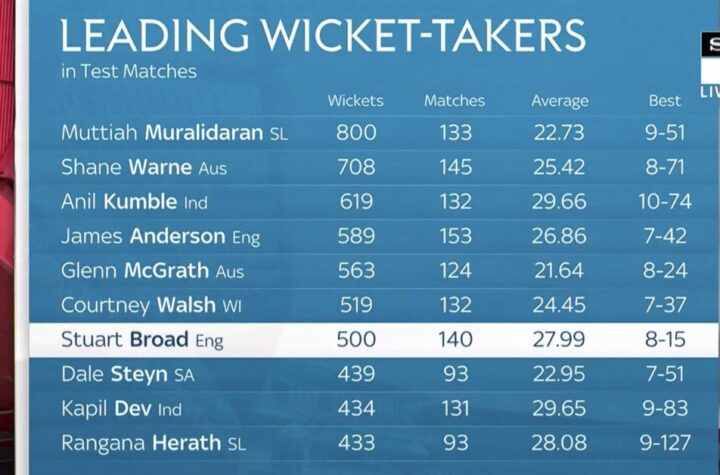
Bowlers strive to dismiss opposition batsmen quickly in order to increase their odds of victory in cricket matches. From dramatic leg before wicket decisions (LBWs) and runouts to precise fielding catches (runouts), each official method of dismissal adds its own special flair and excitement to cricket games.
An out is achieved when a legal delivery hits either the bat or glove and dislodges its bails, or another form of damage such as hitting wicket, obstructing the field, and waiting too long before appearing at their crease.
Bowled
Cricket dismissals usually fall under three categories: caught, bowled and leg before wicket (LBW). There are other less traditional options like retired out and timed out that add strategic layers to the game and it helps fans understand and enjoy it more by learning these methods of dismissal.
An out bowled is achieved when a legal delivery from the bowler hits the stumps and dislodges their bails, either directly or deflected off of either their bat or glove holding their bat, dislodging both. It is one of the easiest ways for batters to be outed while attesting to their bowler’s skills.
Batters can be caught when a fielder, such as a wicketkeeper or bowler, catches the ball before it touches the ground and makes full contact. Although deflected off of bat or glove may still touch a fielder to be captured.
Timed Out A batter is out timed when they take longer than three minutes to arrive at their crease prior to facing their next delivery, an unusual method first used at the 2023 ODI World Cup by Sri Lanka’s Angelo Mathews. There is also another form of timed out known as Retired Out; which occurs when they leave without permission and do not return for resume batting later on in the game.
Caught
Cricket offers numerous methods by which a batter may be dismissed from a match, adding layers of intrigue and highlighting essential skills and strategies that both players and fans rely on. From common dismissals such as caught and bowled, to rarer ones like timed out or obstruction on the field; each dismissal method adds something unique and interesting to this sport.
An individual can be caught out if their bat or glove touches the ball before touching the ground, and it is caught by either a fielder, wicketkeeper, or bowler before it hits the ground. This form of dismissal is one of the most frequent methods employed in cricket and highlights fielders’ skill and quick reflexes when making a catch.
Cricket also employs another form of dismissal known as timed out, which occurs when a new batter takes too long to reach their crease after receiving their next delivery. Angelo Mathews made history when he became the first international cricketer ever timed out, in an ODI World Cup match against Bangladesh 2023.
An out can also occur if they leave their crease to run or are out when the bowler prepares to deliver a ball; this is known as being Mankad Out. Additionally, handling of the ball without permission could lead to its removal from play as another form of dismissal.
Timed out
Timing out is a type of dismissal which occurs when an incoming batsman fails to face the new ball within the allotted time period following another player’s dismissal. This rule encourages promptness and ensures the game runs without unnecessary delays; furthermore it fosters sportsmanship and fair play among cricket players.
To avoid getting timed out, batsmen must be ready to face their next delivery within two minutes after another batsman’s dismissal – an often rare form of dismissal that highlights the significance of promptness and discipline in cricket.
Hit Wicket dismissals occur when the batter intentionally dislodges their stumps while trying to play or take a run, violating game rules and potentially leading to their outlawing. This action constitutes an illegal act that should never occur and should be treated as such by all players involved in cricket.
Understanding cricket’s various dismissals adds another level of excitement and complexity. They help fans and players alike better grasp its nuances as well as its history; from dramatic LBW decisions to precise stumpings, these dismissals make the sport so captivating.
Retired
Cricket fans and followers often focus on scoring runs, but dismissals can also play an essential role in both teams’ victories. Knowing all the ways a batter may be dismissed will give fans a better understanding of the sport as a whole and why its so captivating. While some dismissals are straightforward and obvious, others can completely alter the outcome of matches.
A batter is declared bowled when a ball from a bowler hits and dislodges the stumps, an action known as bowling, which displays skill and precision on behalf of both bowler and wicket-keeper. A wicket-keeper may also knock the bails off of stumps by knocking off bails with their fingers to dismiss batters; this technique known as stumping may be accomplished using either slow, medium-paced bowling; however fast bowling cannot work due to distance from wicket-keeper to stumps.
Run-outs are another means by which a batter may be dismissed, and occur when they attempt a run and do not reach the popping crease in time. A fielder touching any part of their bat outside the popping crease is enough for an out, sometimes known as Mankading after Indian cricketer Vinoo Mankad first used this tactic in 1947. Finally, batters may also be out if they attempt to obstruct fielding side with either body or bat use in order to stop run outs or catch opportunities occurring on either side.





More Stories
The Highest Wicket Taker in Test Cricket
India National Cricket Team Vs Australian Men’s Cricket Team Timeline
One-Off Tournaments in Sports: Meaning, Importance & Global Impact